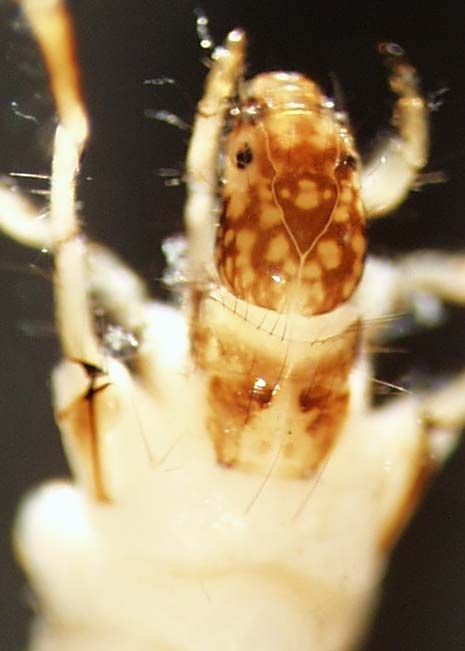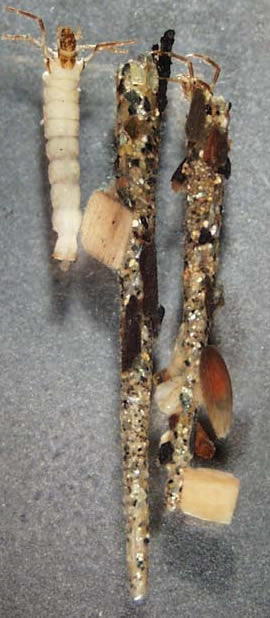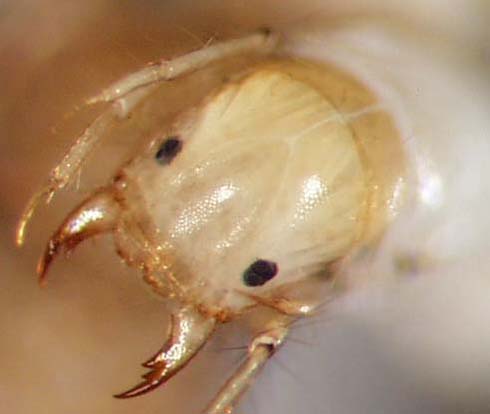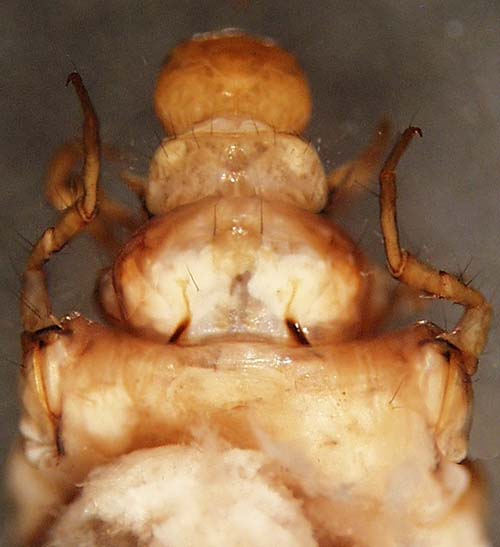
THE XERCES SOCIETY FOR INVERTEBRATE CONSERVATION Aquatic Invertebrates in Pacific Northwest Freshwater Wetlands |
| Identify taxa |
Leptoceridae (long-horned case makers) |
The long-horned case makers are named for their prominent antennae, which are pretty short compared to other insects, but long for caddisflies (about 6 times as long as they are wide). Leptocerids are a relatively tolerant group that inhabit a wide range of freshwater habitats. One genus even has species that live mostly in sponges. The genera Mystacides and Oecetis have been collected in wetlands in the Willamette Valley of Oregon. Leptocerid larvae build a variety of cases, from elongated to very thick. They often use sand grains and rock fragments for the bulk of the case and incorporate pieces of plants. The mesonotum usually has a large plate that ranges from brown to almost clear, and may have a few dark crescent shapes near the back. The metanotum lacks plates on top and may have only a few hairs. The hind legs are very long and thin and are often held curved over their head. |
Size: medium to large |
|
© 2007 Xerces Society
Contact info@xerces.org








